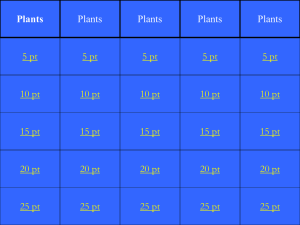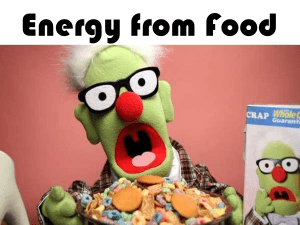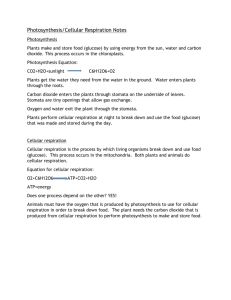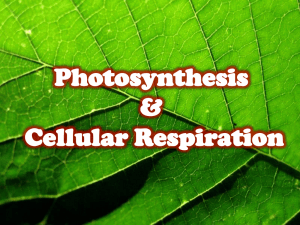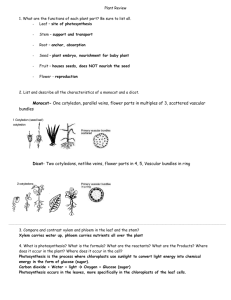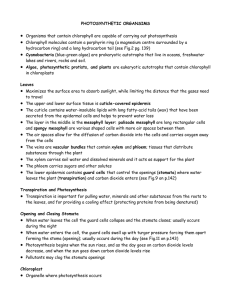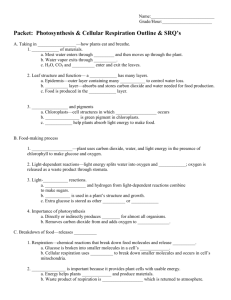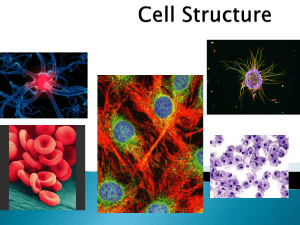Photosynthesis
advertisement
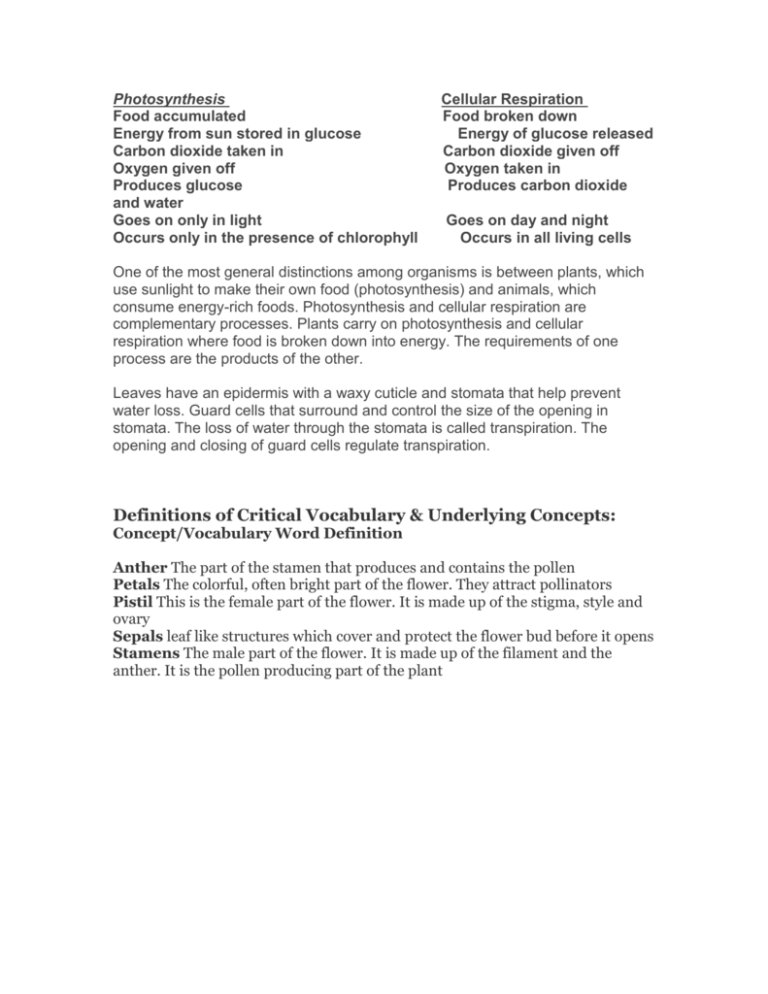
Photosynthesis Food accumulated Energy from sun stored in glucose Carbon dioxide taken in Oxygen given off Produces glucose and water Goes on only in light Occurs only in the presence of chlorophyll Cellular Respiration Food broken down Energy of glucose released Carbon dioxide given off Oxygen taken in Produces carbon dioxide Goes on day and night Occurs in all living cells One of the most general distinctions among organisms is between plants, which use sunlight to make their own food (photosynthesis) and animals, which consume energy-rich foods. Photosynthesis and cellular respiration are complementary processes. Plants carry on photosynthesis and cellular respiration where food is broken down into energy. The requirements of one process are the products of the other. Leaves have an epidermis with a waxy cuticle and stomata that help prevent water loss. Guard cells that surround and control the size of the opening in stomata. The loss of water through the stomata is called transpiration. The opening and closing of guard cells regulate transpiration. Definitions of Critical Vocabulary & Underlying Concepts: Concept/Vocabulary Word Definition Anther The part of the stamen that produces and contains the pollen Petals The colorful, often bright part of the flower. They attract pollinators Pistil This is the female part of the flower. It is made up of the stigma, style and ovary Sepals leaf like structures which cover and protect the flower bud before it opens Stamens The male part of the flower. It is made up of the filament and the anther. It is the pollen producing part of the plant

